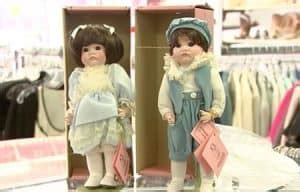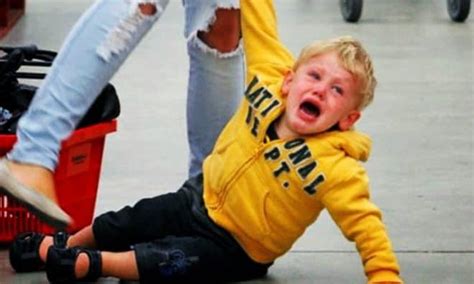
A keen eye at a thrift store could lead to a significant payday, as certain vintage dolls are fetching impressive prices in the collector’s market. Experts advise that identifying these potentially lucrative treasures requires understanding specific features, brands, and conditions that drive up their value.
The allure of vintage dolls extends beyond mere nostalgia; it’s a market driven by rarity, historical significance, and the passionate pursuit of collectors worldwide. These dolls, often remnants of past eras, can hold substantial monetary value, making them hidden gems in thrift stores, estate sales, and antique shops. “Vintage dolls are a hot commodity right now,” says doll expert Danae Campbell, emphasizing the potential for profit in this niche market. Knowing which dolls to look for could transform a simple thrift store visit into a potentially lucrative venture.
Key Indicators of Value
Several factors contribute to a vintage doll’s worth. According to Campbell, the brand is paramount. Dolls from renowned manufacturers like Barbie, Madame Alexander, and Shirley Temple are highly sought after. These brands often have a rich history and a dedicated following of collectors willing to pay top dollar for rare or pristine examples.
The doll’s condition is equally crucial. Mint-condition dolls, especially those still in their original packaging, command the highest prices. However, even dolls with minor imperfections can be valuable, particularly if they are rare or possess unique features. “Condition is key, but rarity can often trump minor flaws,” Campbell notes.
Rarity is another significant value determinant. Dolls produced in limited quantities or with specific variations are highly desirable. This can include dolls with unique hairstyles, clothing, or facial features. Special edition dolls or those commemorating historical events also tend to be more valuable. “Limited editions and dolls with unique attributes always generate more interest,” Campbell explains.
Spotting the Potential Payday
Identifying valuable vintage dolls requires a keen eye and a degree of familiarity with different brands and models. Before diving into the world of vintage doll collecting, it’s helpful to research popular and valuable dolls, familiarize yourself with their characteristics, and understand the factors that influence their market value.
One of the most iconic and valuable vintage dolls is the original Barbie. Introduced by Mattel in 1959, the first Barbie dolls are highly sought after by collectors. These dolls, easily recognizable by their distinctive cat-eye makeup and blonde ponytail, can fetch thousands of dollars, especially if they are in excellent condition and still in their original packaging. “An original 1959 Barbie in mint condition can be worth upwards of $25,000,” Campbell notes.
Madame Alexander dolls are another valuable collectible. These dolls, known for their exquisite craftsmanship and detailed costumes, were popular throughout the 20th century. Certain Madame Alexander dolls, particularly those representing historical figures or literary characters, can be quite valuable. “Madame Alexander dolls, especially those from the 1930s and 1940s, are highly prized,” Campbell explains.
Shirley Temple dolls, inspired by the iconic child actress, are also highly collectible. These dolls, produced by Ideal Toy Company in the 1930s, were incredibly popular and remain so today. Shirley Temple dolls in good condition, especially those with their original clothing and accessories, can fetch substantial prices. “A Shirley Temple doll in excellent condition can easily sell for several hundred dollars, if not more,” Campbell says.
Other vintage dolls to watch out for include those from German dollmakers like Käthe Kruse and Armand Marseille, which are renowned for their quality and artistry. Dolls from these manufacturers, particularly those dating back to the early 20th century, can be highly valuable.
Evaluating Condition and Authenticity
Once you’ve identified a potential vintage doll, it’s crucial to carefully evaluate its condition and authenticity. A thorough inspection can reveal hidden flaws or confirm the doll’s originality.
Start by examining the doll’s overall condition. Look for any signs of damage, such as cracks, chips, or stains. Check the doll’s hair, clothing, and accessories for wear and tear. Minor imperfections may not significantly detract from the doll’s value, but significant damage can substantially reduce its worth. “Look closely for any damage, but remember that some wear is expected in vintage items,” advises Campbell.
Next, verify the doll’s authenticity. Look for any markings or labels that indicate the doll’s manufacturer and model number. Research these markings to confirm that they match the doll’s features and characteristics. Be wary of dolls that appear to be replicas or reproductions, as these are generally less valuable than original vintage dolls. “Always check for identifying marks and compare them to known examples to ensure authenticity,” Campbell recommends.
Pay attention to the doll’s clothing and accessories. Original clothing and accessories can significantly increase a doll’s value. Check the clothing for any signs of wear or damage, and compare it to known examples to ensure that it is original to the doll. Be wary of clothing that appears to be a replacement or reproduction, as this can diminish the doll’s value. “Original clothing and accessories are a huge plus,” Campbell notes.
Where to Sell Your Vintage Doll
Once you’ve identified a valuable vintage doll, the next step is to determine where to sell it. Several options are available, each with its own advantages and disadvantages.
Online auction sites like eBay are a popular choice for selling vintage dolls. These sites offer a wide audience of potential buyers and allow you to set your own price. However, they also charge fees and require you to handle shipping and customer service. “eBay is a great option for reaching a large audience, but be prepared to handle the logistics of selling online,” Campbell advises.
Consignment shops specializing in vintage items are another option. These shops will display your doll and handle the sale for you, taking a percentage of the final price as commission. This can be a convenient option, but you may have less control over the pricing and selling process. “Consignment shops can be a good option if you prefer not to handle the sale yourself,” Campbell explains.
Antique dealers and doll collectors are also potential buyers. These individuals are often knowledgeable about vintage dolls and may be willing to pay a fair price for a valuable example. However, finding these buyers may require some networking and research. “Connecting with antique dealers and collectors can be a great way to sell your doll for a good price,” Campbell notes.
Doll shows and conventions are another avenue for selling vintage dolls. These events bring together collectors, dealers, and enthusiasts, providing a focused marketplace for buying and selling dolls. Participating in a doll show can be a great way to showcase your doll and connect with potential buyers. “Doll shows are a fantastic way to connect with serious collectors and enthusiasts,” Campbell recommends.
The Allure of Vintage Doll Collecting
The appeal of vintage doll collecting lies in its blend of nostalgia, history, and potential financial gain. These dolls are not just toys; they are artifacts that offer a glimpse into the past. Each doll has its own story to tell, reflecting the trends, values, and aesthetics of its time.
For many collectors, the thrill of the hunt is as rewarding as the acquisition itself. Scouring thrift stores, estate sales, and antique shops in search of hidden treasures is a passion that drives many collectors. The anticipation of discovering a rare and valuable doll is a powerful motivator.
The sense of connection to the past is another key aspect of vintage doll collecting. These dolls evoke memories of childhood, reminding collectors of simpler times and cherished moments. Owning a vintage doll can be a way to relive these memories and pass them on to future generations.
The potential for financial gain is also a significant factor. While most collectors are driven by their passion for dolls, the possibility of finding a valuable example adds an extra layer of excitement. Knowing that a simple thrift store find could turn into a significant payday is a compelling incentive.
Tips for Aspiring Vintage Doll Collectors
If you’re interested in starting your own vintage doll collection, here are a few tips to help you get started:
- Do Your Research: Before you start buying dolls, take the time to research different brands, models, and eras. Learn about the factors that influence a doll’s value, such as condition, rarity, and authenticity. The more you know, the better equipped you’ll be to identify valuable dolls.
- Start Small: Don’t feel like you have to buy every doll you see. Start with a small collection of dolls that you find interesting or appealing. As you learn more about vintage dolls, you can expand your collection and focus on specific areas of interest.
- Focus on Condition: Whenever possible, choose dolls that are in good condition. While minor imperfections may not significantly detract from a doll’s value, significant damage can substantially reduce its worth. Look for dolls that are clean, intact, and free of major flaws.
- Verify Authenticity: Be sure to verify the authenticity of any doll you’re considering buying. Look for identifying marks and labels, and compare them to known examples to ensure that the doll is genuine. Be wary of dolls that appear to be replicas or reproductions.
- Network with Other Collectors: Join online forums, attend doll shows, and connect with other collectors. Sharing your knowledge and experiences with others can help you learn more about vintage dolls and make valuable contacts.
- Be Patient: Finding valuable vintage dolls takes time and patience. Don’t get discouraged if you don’t find a treasure right away. Keep searching, keep learning, and eventually you’ll find the perfect addition to your collection.
- Trust Your Instincts: If you see a doll that catches your eye, trust your instincts. Sometimes, the most valuable dolls are the ones that speak to you on a personal level. Don’t be afraid to take a chance on a doll that you find interesting or appealing.
- Preserve Your Investment: Learn how to properly store and care for your vintage dolls to maintain their condition and value. Use appropriate display cases, avoid direct sunlight, and handle them with care.
- Document Your Collection: Keep detailed records of the dolls you acquire, including their provenance, purchase price, and any restoration or repairs you’ve undertaken. This documentation will be valuable when you decide to sell or appraise your collection.
- Enjoy the Process: Collecting vintage dolls should be a fun and rewarding experience. Don’t get too caught up in the financial aspect of it. Focus on the joy of discovering new dolls, learning about their history, and connecting with other collectors.
Deeper Dive into Specific Doll Types:
- Barbie: The original 1959 Barbie, especially those in their original packaging and in pristine condition, can fetch exorbitant prices. Key features to look for include the original black and white swimsuit, cat-eye makeup, and the “ponytail” hairstyle. Subsequent early Barbies, particularly those from the 1960s, are also highly sought after. Variations in hair color, clothing, and accessories can also impact value. For instance, a bubble-cut Barbie in a rare ensemble could command a premium.
- Madame Alexander Dolls: These dolls are recognized for their meticulous detail and representation of historical figures, literary characters, and popular personalities. Look for dolls from the 1930s and 1940s, particularly those in their original costumes and with their original accessories. The “Scarlett O’Hara” doll and other character dolls are particularly valuable. The craftsmanship and the quality of the materials used contribute to their collectibility.
- Shirley Temple Dolls: The Ideal Toy Company produced these dolls in the 1930s, capitalizing on Shirley Temple’s immense popularity. Key indicators of value include the doll’s condition, original clothing, and the presence of the original Shirley Temple pin. Dolls with the original box and paperwork can significantly increase their value. The composition of the doll’s body (e.g., whether it’s made of composition or vinyl) also affects its price.
- Käthe Kruse Dolls: These German dolls are known for their handcrafted quality and lifelike features. Dating back to the early 20th century, Käthe Kruse dolls are highly collectible due to their artistic merit and historical significance. Look for dolls with original clothing and accessories, and be aware that condition is a significant factor in determining their value.
- Armand Marseille Dolls: Another German dollmaker, Armand Marseille, produced a wide range of bisque dolls that are popular among collectors. These dolls are known for their delicate features and expressive eyes. The mold number, size, and condition of the doll all contribute to its value. Look for dolls with original clothing and accessories, and be wary of repairs or restoration, which can diminish their value.
Understanding the Market:
The vintage doll market is influenced by various factors, including economic conditions, collector trends, and the availability of specific dolls. Staying informed about these factors can help you make informed decisions about buying and selling vintage dolls.
- Collector Trends: The popularity of specific dolls can fluctuate over time. What is highly sought after today may not be as desirable tomorrow. Staying abreast of current trends in the doll collecting community can help you identify opportunities to buy or sell dolls at optimal prices.
- Economic Conditions: Economic downturns can impact the value of collectibles, including vintage dolls. During periods of economic uncertainty, collectors may be more cautious about spending money, which can lead to lower prices. Conversely, during periods of economic growth, demand for collectibles may increase, driving up prices.
- Rarity and Condition: As previously mentioned, rarity and condition are key determinants of value in the vintage doll market. Dolls that are scarce and in excellent condition are typically the most valuable. However, even dolls with minor imperfections can be valuable if they are rare or possess unique features.
- Online Marketplaces: Online auction sites and marketplaces have transformed the vintage doll market, making it easier for collectors to buy and sell dolls from around the world. These platforms offer a wide audience of potential buyers and sellers, but they also require careful attention to detail to avoid fraud and ensure fair transactions.
Avoiding Pitfalls:
The vintage doll market can be fraught with pitfalls for inexperienced collectors. Here are a few common mistakes to avoid:
- Overpaying for Dolls: It’s easy to get caught up in the excitement of finding a doll you want, but it’s important to do your research and avoid overpaying. Compare prices for similar dolls on different platforms before making a purchase.
- Buying Replicas or Reproductions: Replicas and reproductions are often sold as vintage dolls, but they are typically worth much less than original examples. Be sure to carefully examine any doll you’re considering buying to ensure that it is authentic.
- Ignoring Condition: Don’t underestimate the importance of condition. Even a rare doll can be significantly devalued if it is in poor condition. Look for dolls that are clean, intact, and free of major flaws.
- Neglecting Storage and Care: Proper storage and care are essential for maintaining the value of your vintage dolls. Store your dolls in a cool, dry place away from direct sunlight, and handle them with care to avoid damage.
The Emotional Value:
Beyond the financial aspects, vintage dolls often hold significant emotional value for collectors. These dolls can evoke cherished memories of childhood, connect collectors to the past, and provide a sense of nostalgia and comfort. For many collectors, the emotional value of a vintage doll is just as important as its monetary value.
FAQ Section:
1. What makes a vintage doll valuable?
A vintage doll’s value is determined by several factors including its brand (e.g., Barbie, Madame Alexander, Shirley Temple), condition (mint condition dolls fetch the highest prices), rarity (limited editions or dolls with unique features), and historical significance. Dolls with original clothing, accessories, and packaging also command higher prices.
2. How can I identify a valuable vintage doll at a thrift store?
Look for dolls from well-known manufacturers, check for identifying marks or labels, and examine the doll’s condition. Research any unique features or characteristics you find. Pay attention to details like hair, clothing, and facial features, and compare them to known examples of valuable dolls. Familiarizing yourself with common valuable doll types will increase your chances of spotting a treasure.
3. What are the best places to sell a valuable vintage doll?
You can sell vintage dolls through online auction sites like eBay, consignment shops specializing in vintage items, antique dealers, doll collectors, and doll shows/conventions. Each option has its own advantages and disadvantages in terms of reach, fees, and control over the selling process.
4. What should I look for when evaluating the condition of a vintage doll?
Examine the doll for any signs of damage, such as cracks, chips, or stains. Check the hair, clothing, and accessories for wear and tear. Verify the doll’s authenticity by looking for markings or labels that indicate the manufacturer and model number. Compare the clothing and accessories to known examples to ensure they are original to the doll.
5. How can I protect and preserve my vintage doll collection?
Store your dolls in a cool, dry place away from direct sunlight. Use appropriate display cases to protect them from dust and damage. Handle them with care and avoid exposing them to extreme temperatures or humidity. Consider insuring your collection against loss or damage.









